The Sicilian Baroque - The Baroque Architecture and Art of Sicily
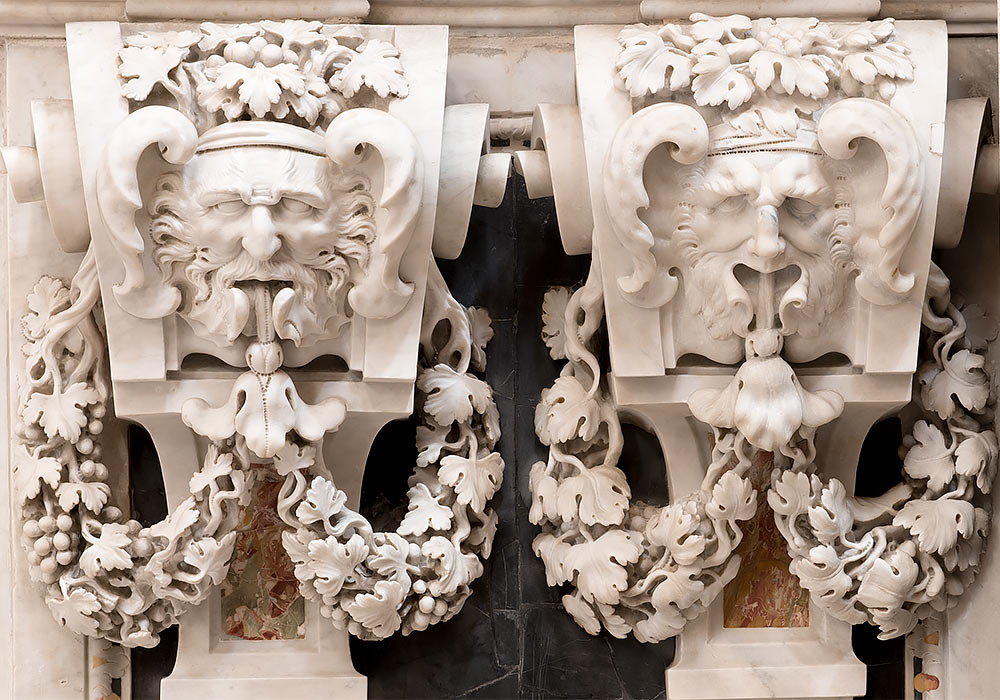
The marble reliefs with their figural and ornamental motifs in the Church of the Gesù (Chiesa del Gesù) are marvellous. The Church of the Gesù (also called Chiesa del Gesù, Church of Saint Mary of Gesu, Chiesa di Santa Maria di Gesù and Casa Professa is one of the most fascinating Baroque churches in Sicily. It was rebuilt after WWWII, and reopened on 24 February 2009.
Sicilian Baroque architecture emerged as a distinctive style after the devastating earthquake of 1693, which destroyed much of southeastern Sicily. This disaster provided an opportunity for significant architectural and urban renewal. The reconstruction efforts led to entirely new city layouts, particularly in places like Noto and Ragusa, which were rebuilt with sophisticated designs that emphasized grandeur and theatricality, defining features of the Sicilian Baroque style.
This architectural movement is characterized by elaborate balconies, curvilinear facades, and ornate reliefs featuring gargoyles, cherubs, and expressive faces. Honey-colored tufa stone was widely used, especially in Noto, adding warmth and richness to the buildings. Innovative stucco techniques, pioneered by Giacomo Serpotta, incorporated marble dust to create a lustrous finish, further enhancing the interiors of many structures.
Prominent examples of Sicilian Baroque include the Cathedral of San Giorgio in Ragusa Ibla by Rosario Gagliardi, the reconstruction of Catania’s Cathedral of Saint Agatha by Giovanni Battista Vaccarini, and Giacomo Serpotta’s exquisite stucco work in Palermo’s oratories.
The style reflects the island's complex cultural history and the wealth of its aristocracy. In 2002, UNESCO recognized the Val di Noto, including towns like Noto, Modica, Ragusa, Scicli, and Catania, as a World Heritage Site for its exceptional Baroque architecture. Combining local traditions with influences from Rome and Naples, Sicilian Baroque remains a testament to the island’s resilience and artistic innovation.
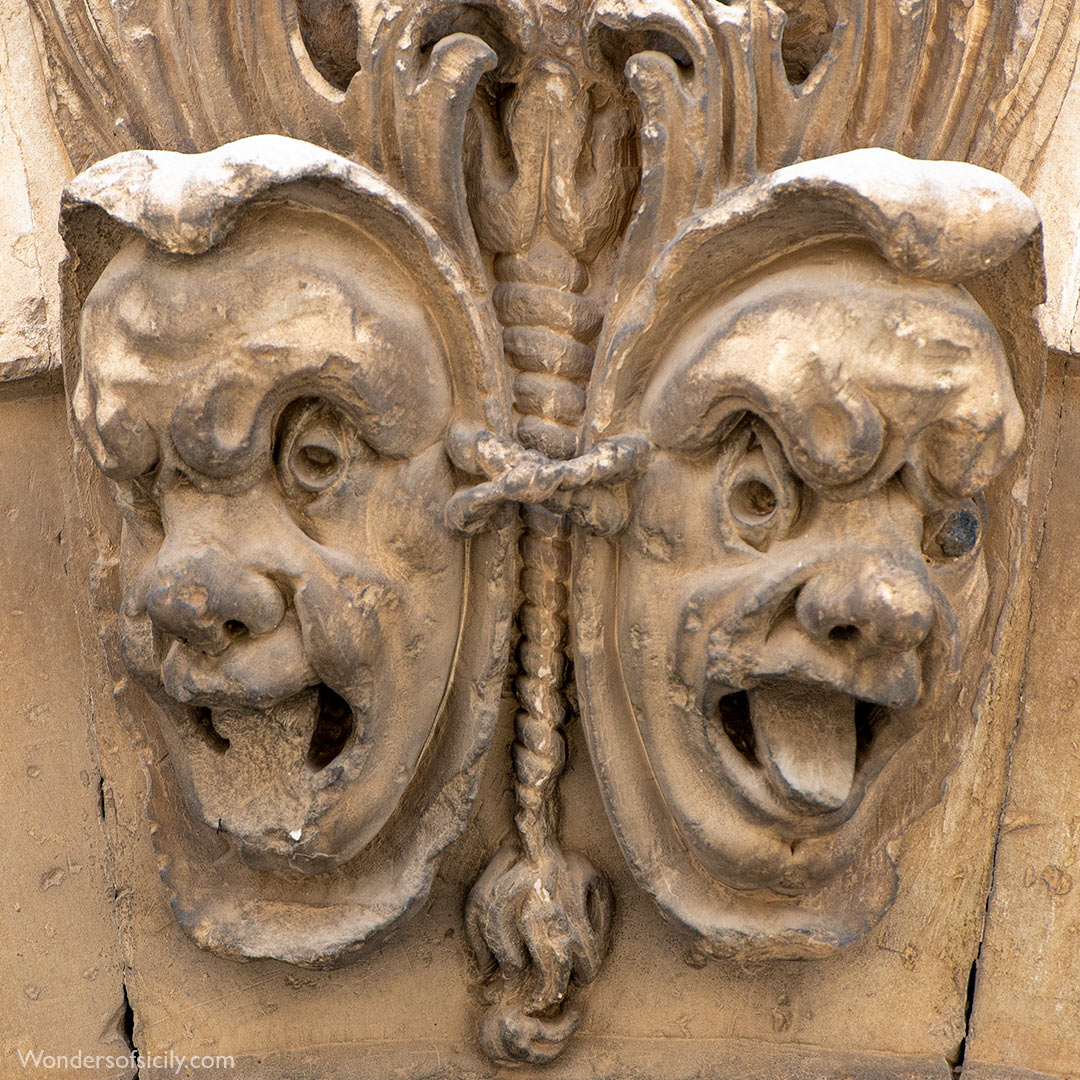
A grotesque in Modica.
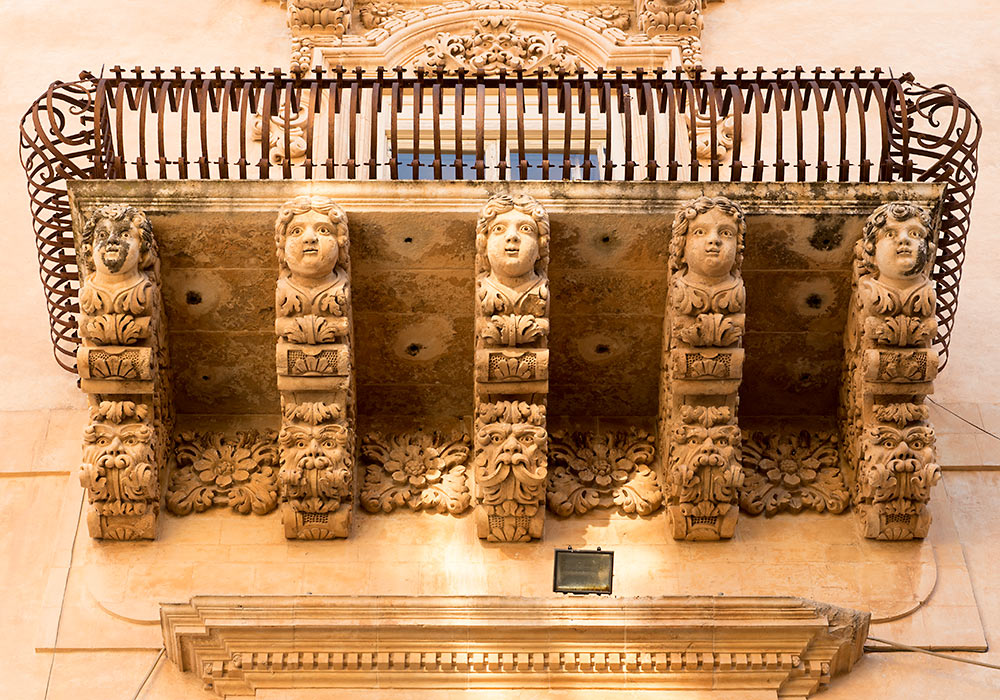
Baroque balcony on Palazzo Nicolaci in via Nicolaci, Noto.
See more balconies in Sicily here
The Dramatic Power of Sicilian Baroque Architecture and the Emotional Impact it makes.
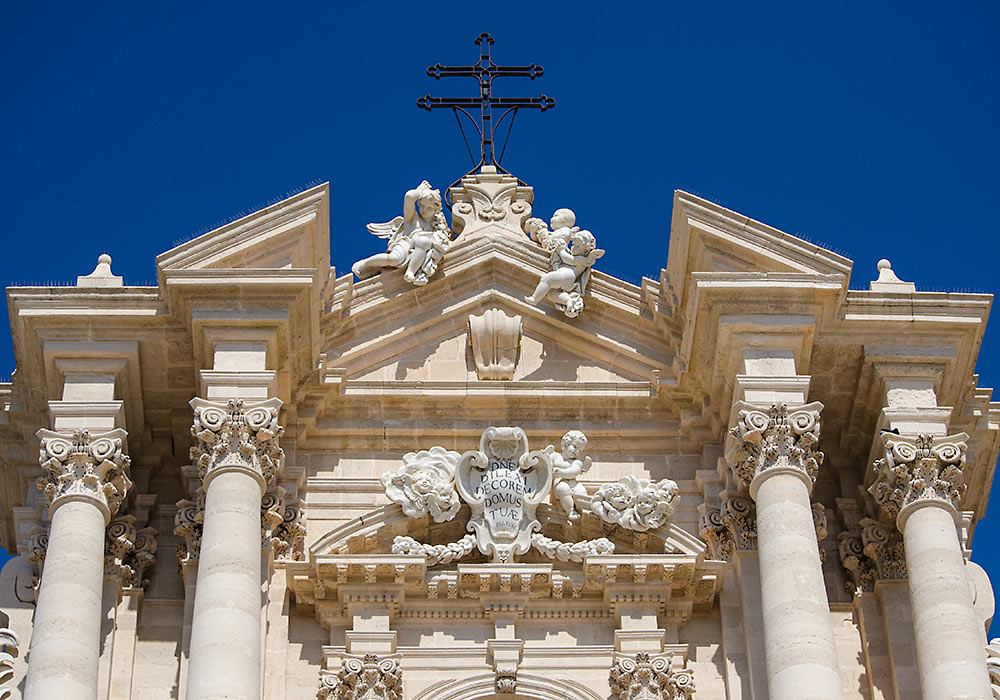
The facade of the Cathedral in Syracuse, a powerful Sicilian-Baroque composition erected in 1728-54. It was designed by Andrea Palma.
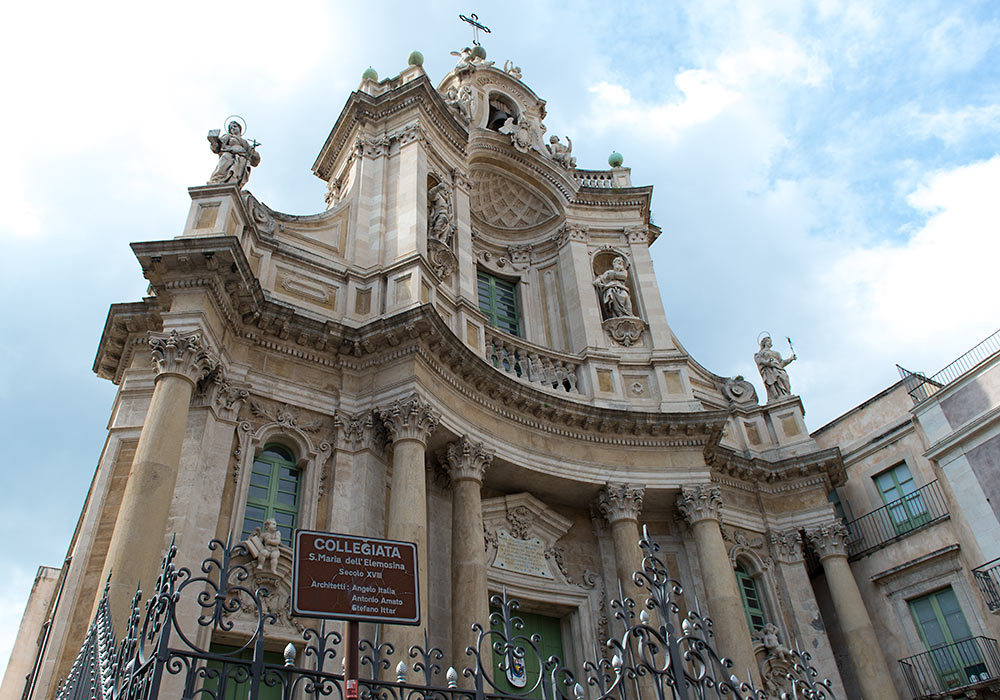
The theatricality of the Sicilian Baroque is wonderful. This is the undulating facade of the royal chapel Collegiata (c. 1768, aka The Basilica della Collegiata and Santa Maria dell'Elemosina), Catania. Architects: Stefano Ittar, Angelo Italia and Antonio Amato.
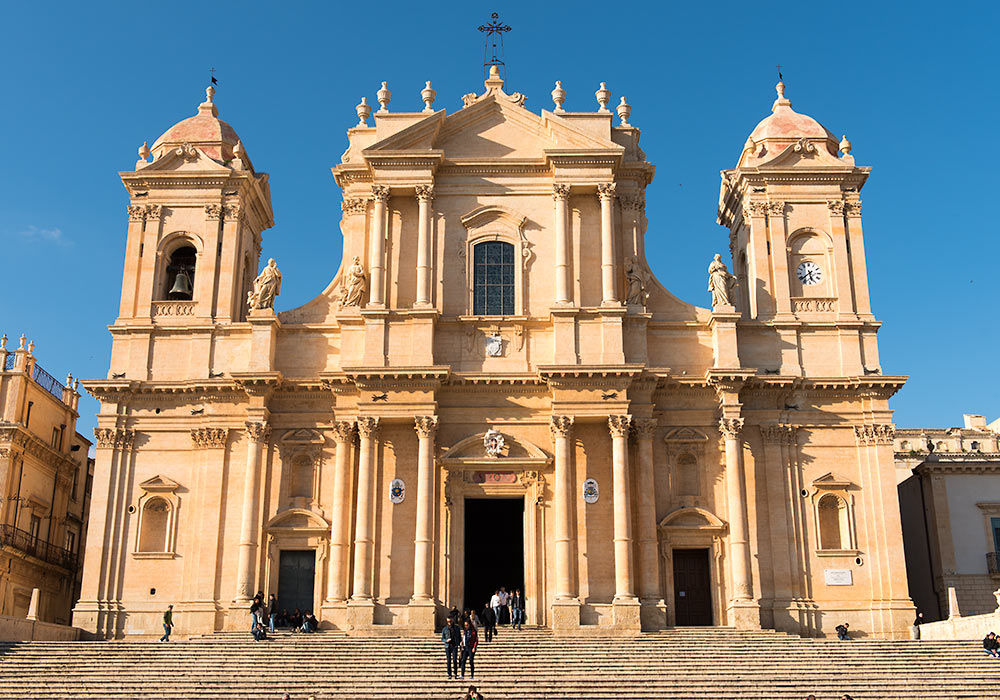
The cathedral in Noto. Built after the devastating earthquake in 1693, Noto – planned on a grid system by Giovanni Battista Landolina – has numerous baroque buildings.
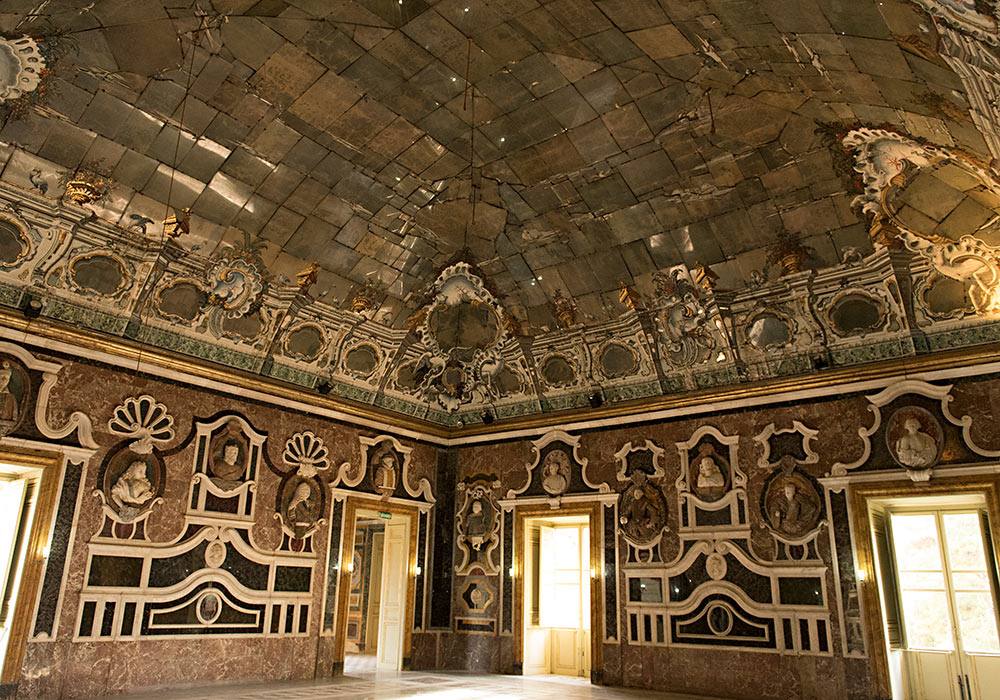
The insanely marvellous, eccentric and overwhelming Hall of Mirrors (Sala degli specchi) in Villa Palagonia, the most famous and popular of the many 18th Century villas in Bagheria.
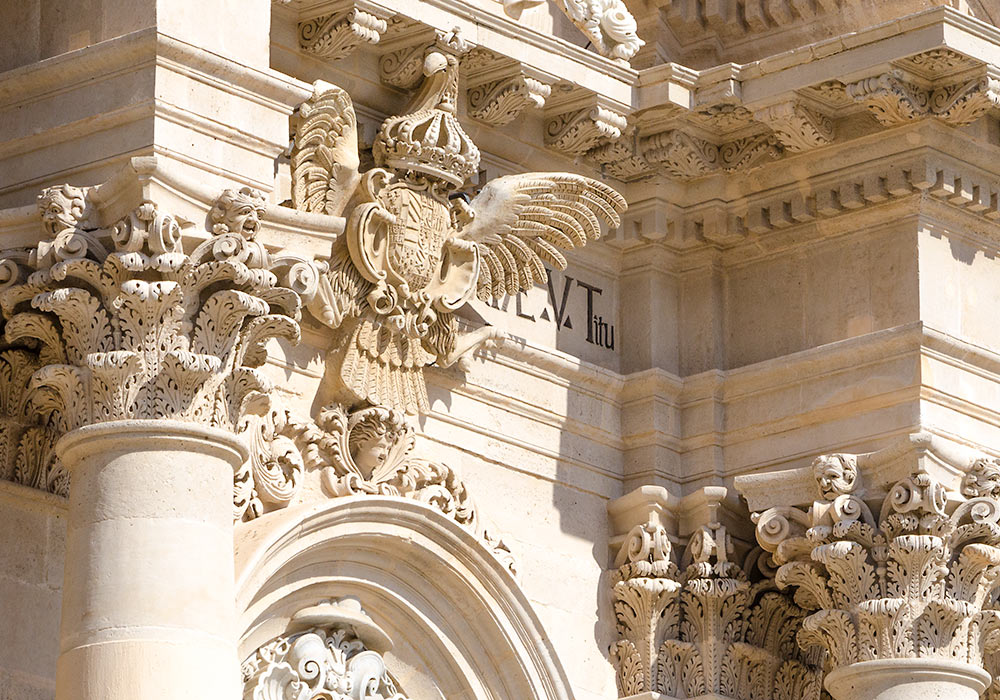
Detail of the magnificent facade of the cathedral in Syracuse (designed by Andrea Palma).
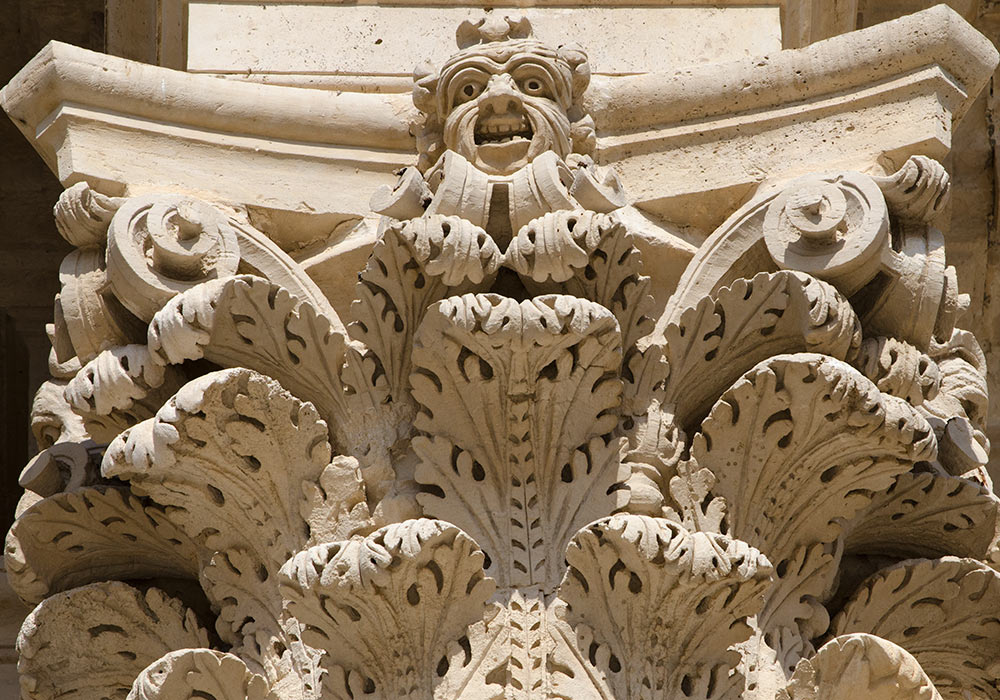
Detail of the decorative ornaments of the baroque cathedral in Syracuse.
Sicilian Sites on UNESCO's World Heritage List
- Agrigento: Archaeological Area of Agrigento (UNESCO)
- Aeolian Islands: Isole Eolie. The group consists of seven islands (Lipari, Vulcano, Salina, Stromboli, Filicudi, Alicudi and Panarea) and five small islets (Basiluzzo, Dattilo, Lisca Nera, Bottaro and Lisca Bianca) in the vicinity of Panarea. (UNESCO)
- Caltagirone (UNESCO)
- Catania (UNESCO)
- Cefalù Cathedral
- Militello Val di Catania (UNESCO)
- Modica (UNESCO)
- Monreale Cathedral
- Mount Etna (UNESCO)
- Noto (UNESCO)
- Palermo: Palazzo dei Normanni (The Norman Palace)
- Palermo: Cappella Palatina (The Palatine Chapel in the Norman Palace)
- Palermo: Church of San Giovanni degli Eremiti
- Palermo: Church of Santa Maria dell'Ammiraglio (also known as the Martorana)
- Palermo: Church of San Cataldo
- Palermo: Cathedral of Palermo
- Palermo: The Zisa Palace (La Zisa)
- Palermo: The Cuba Palace (La Cuba)
- Palazzolo Acreide (UNESCO)
- Ragusa (UNESCO)
- Scicli (UNESCO)
- Syracuse and the Rocky Necropolis of Pantalica (UNESCO)
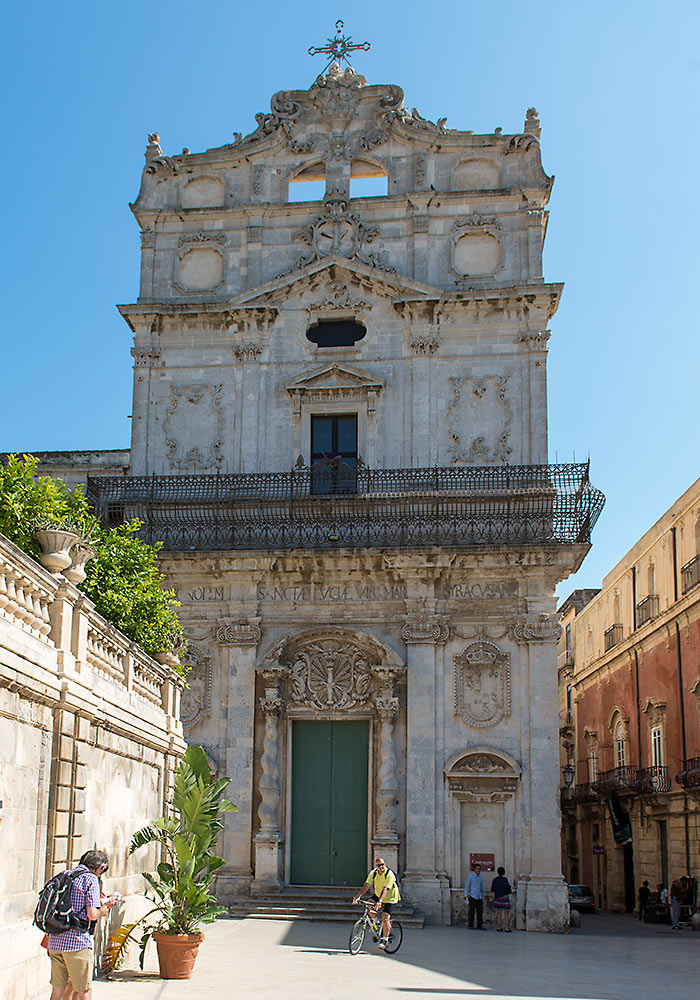
The church of Santa Lucia alla Badia (La chiesa di Santa Lucia alla Badia) is located on the south side of Piazza Duomo. The Bavarian-baroque facade from 1695 is made by Luciano Caracciolo. Inside the church there is a very famous painting by Caravaggio (St. Lucia's funeral).
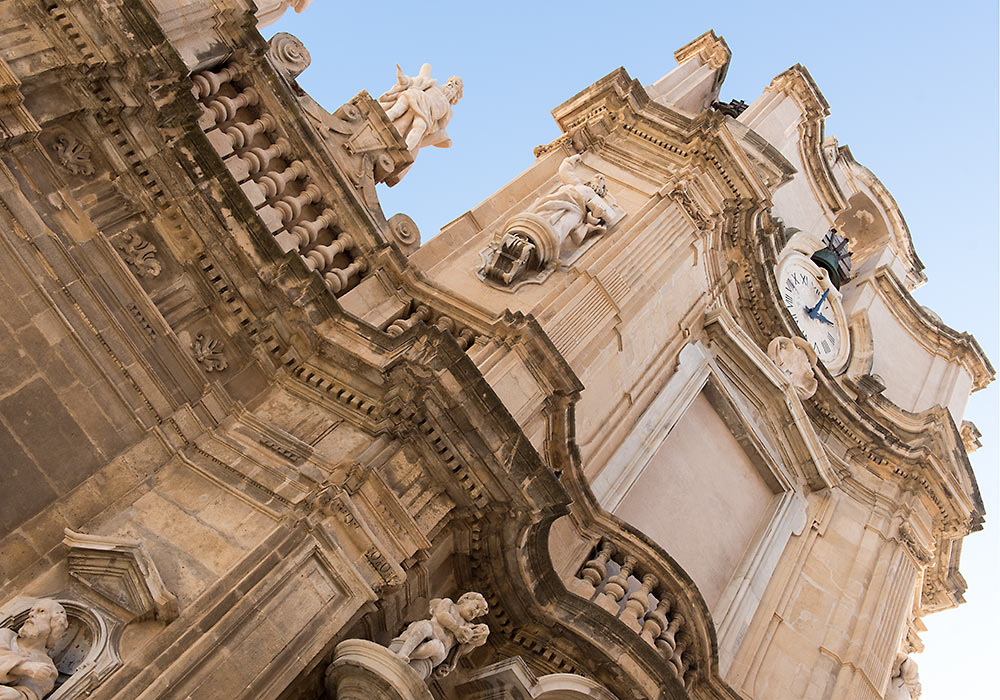
The elaborate facade of La chiesa delle Anime del Purgatorio (Church of the Souls in the Purgatory), one of the many baroque 18th century churches in Trapani. The facade was made by Giovanni Biagio Amico.
Oratorio del Rosario di Santa Cita, Palermo
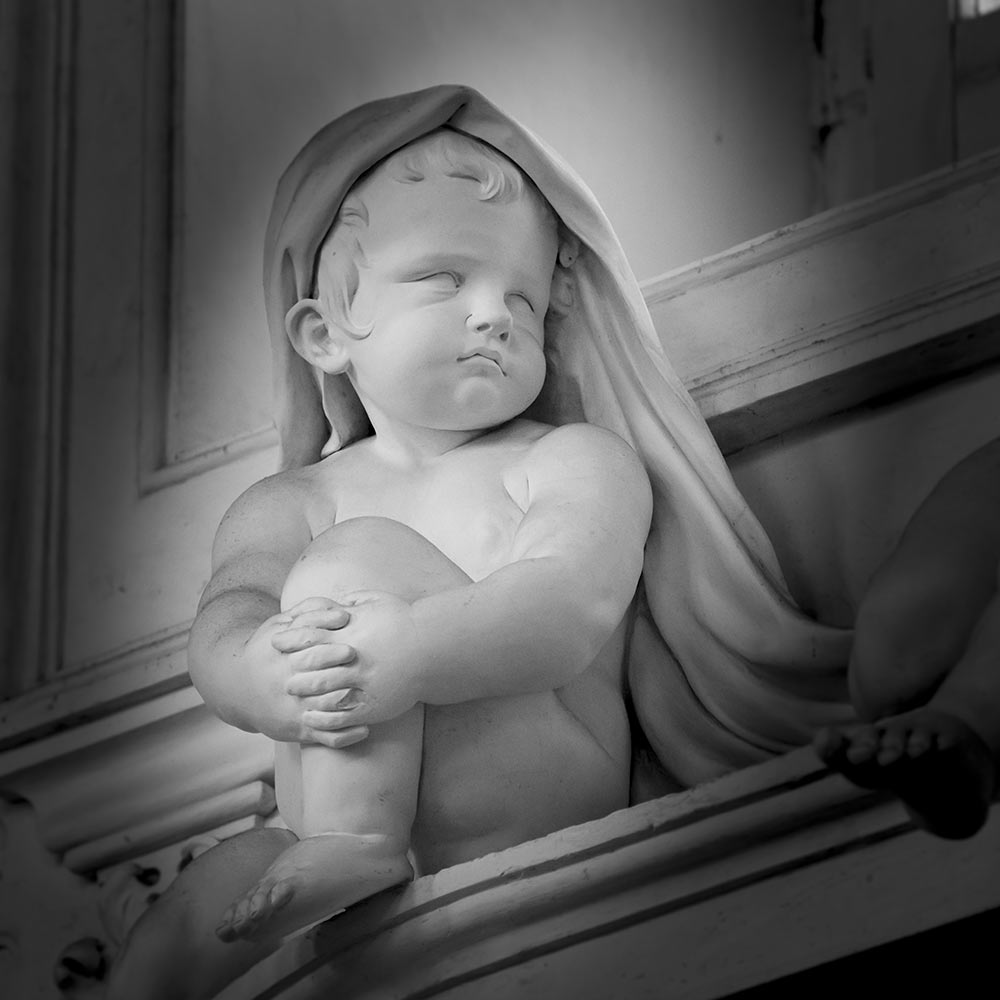
Serpotta putto in Oratorio del Rosario di Santa Cita, Palermo.
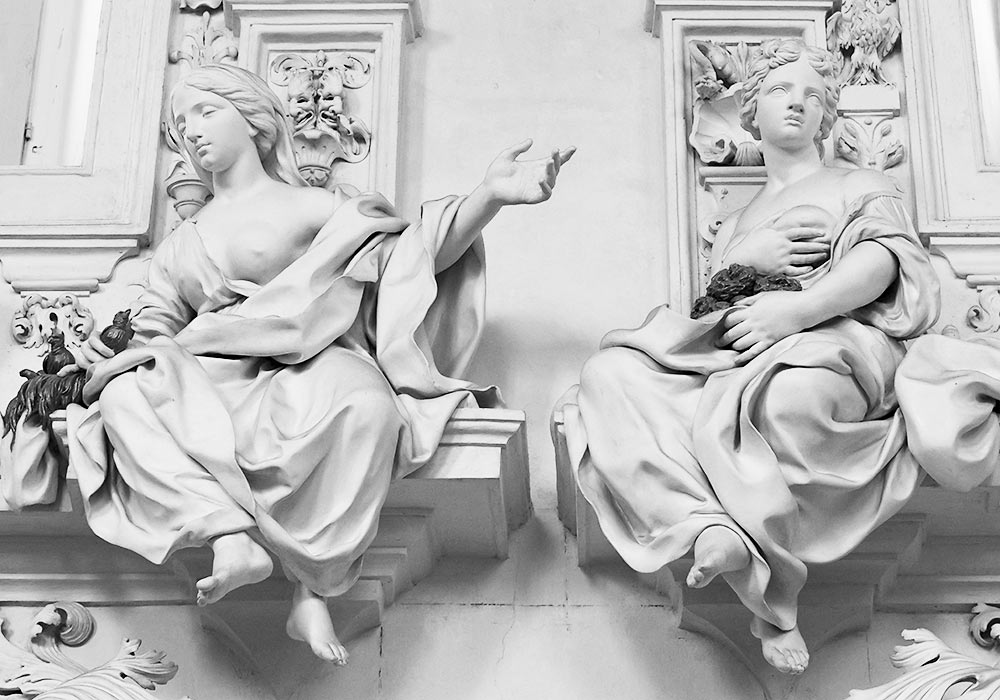
Oratorio del Rosario di Santa Cita, Palermo
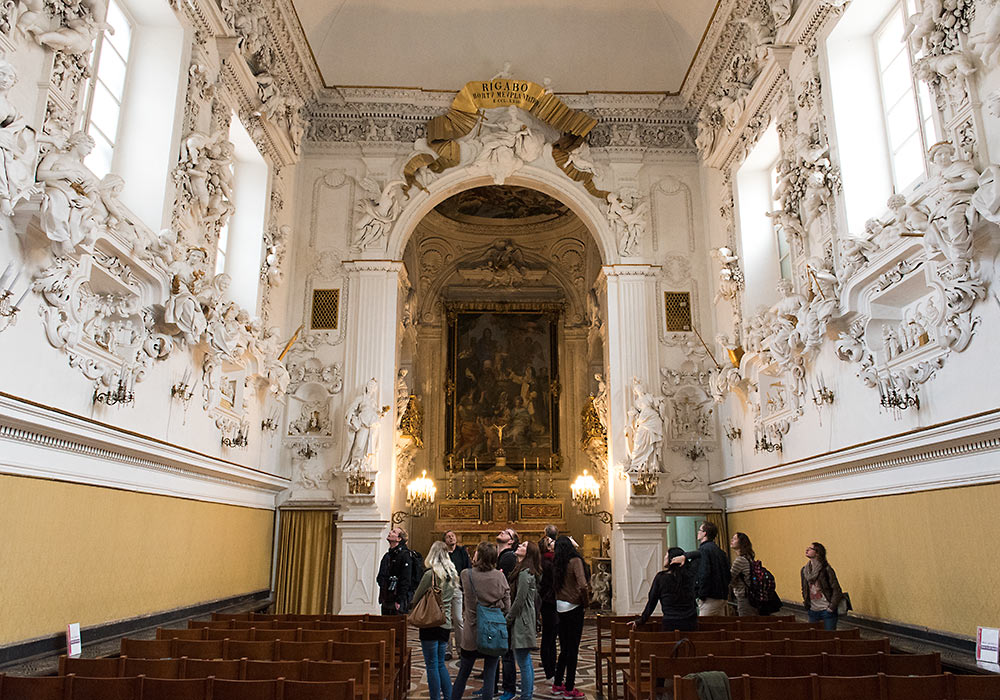
Oratorio del Rosario di Santa Cita, Palermo
Oratorio del SS. Rosario di San Domenico
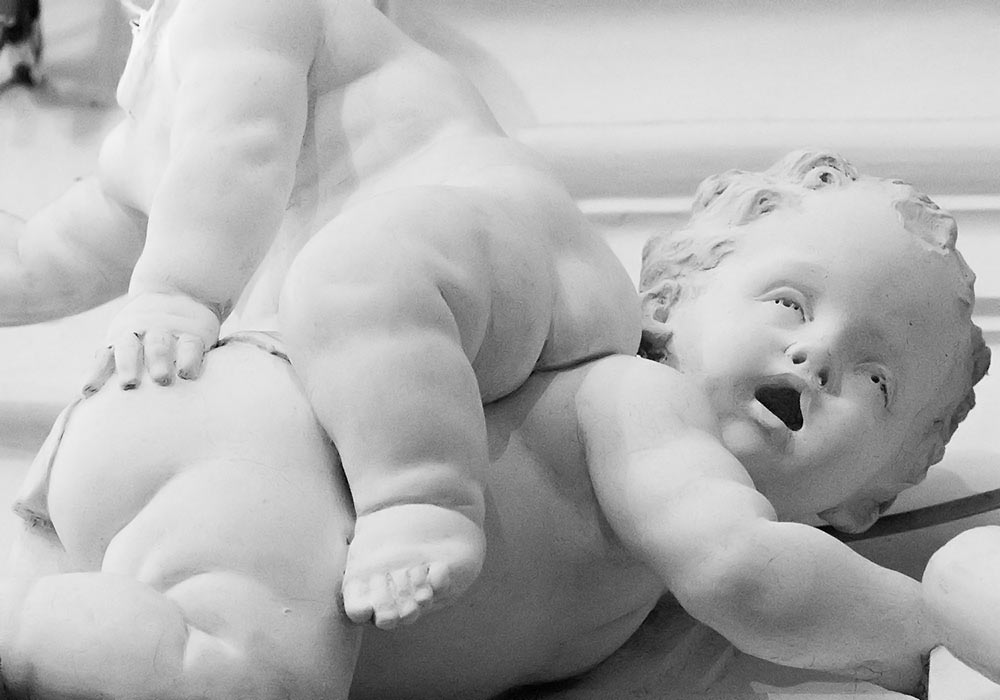
Stucco putti by Giacomo Serpotta (1656-1732) in Oratorio del SS. Rosario di San Domenico, Palermo.
Oratorio di San Lorenzo, Palermo
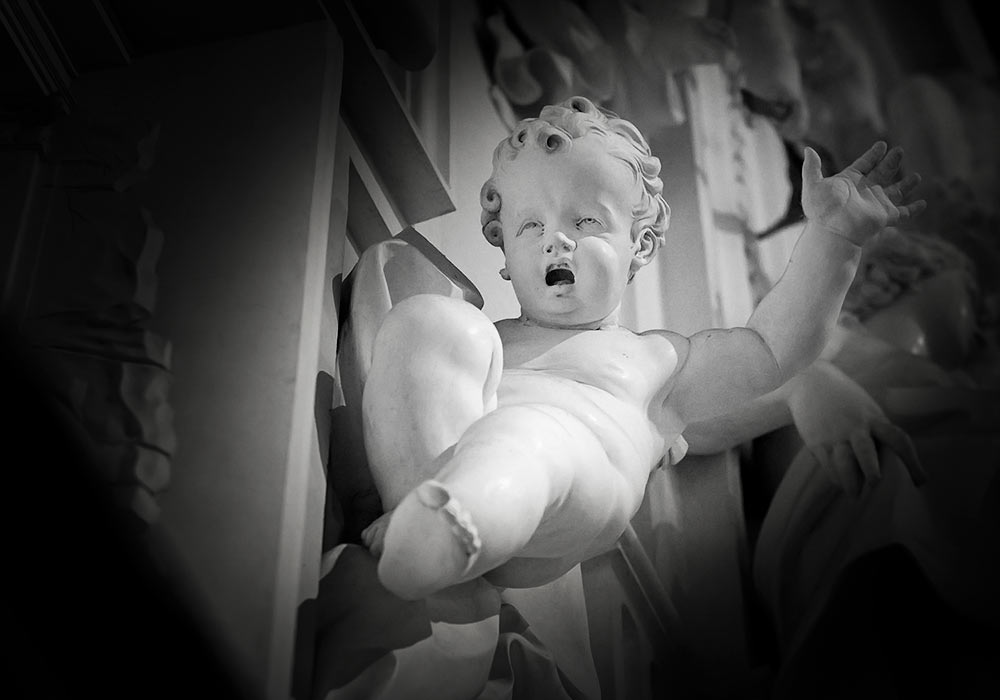
Stucco by Giacomo Serpotta in the Oratorio di San Lorenzo, Palermo.
Serpotta decorations in Cappella Palatina in Castelbuono
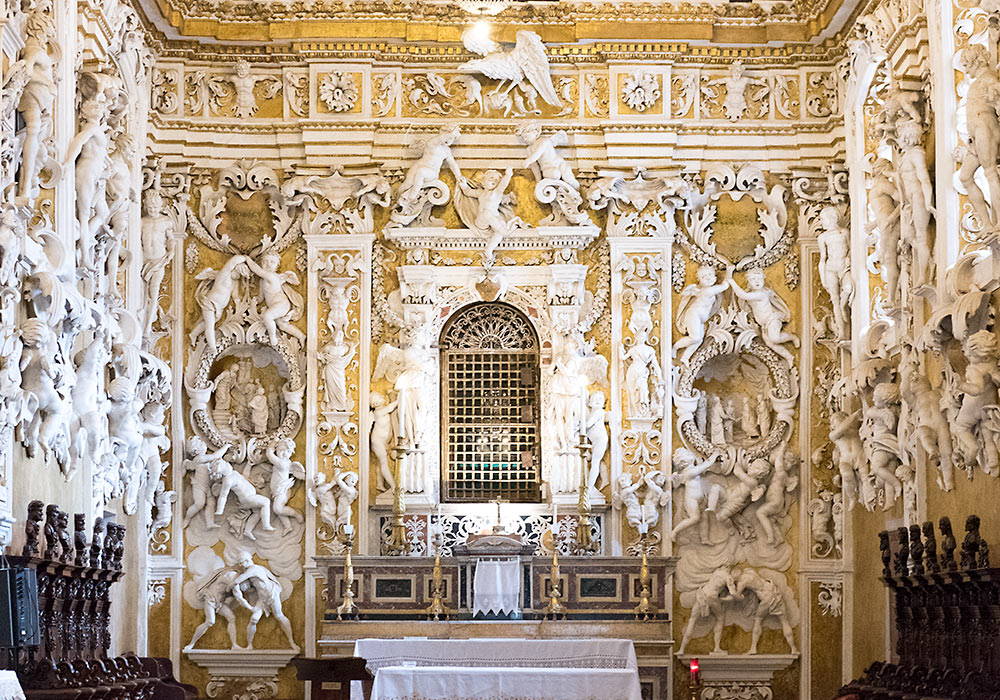
The brothers Giuseppe and Giacomo Serpotta decorated the little Cappella Palatina ("Palace Chapel") in Castello Ventimiglia (the castle in Castelbuono).
Modica
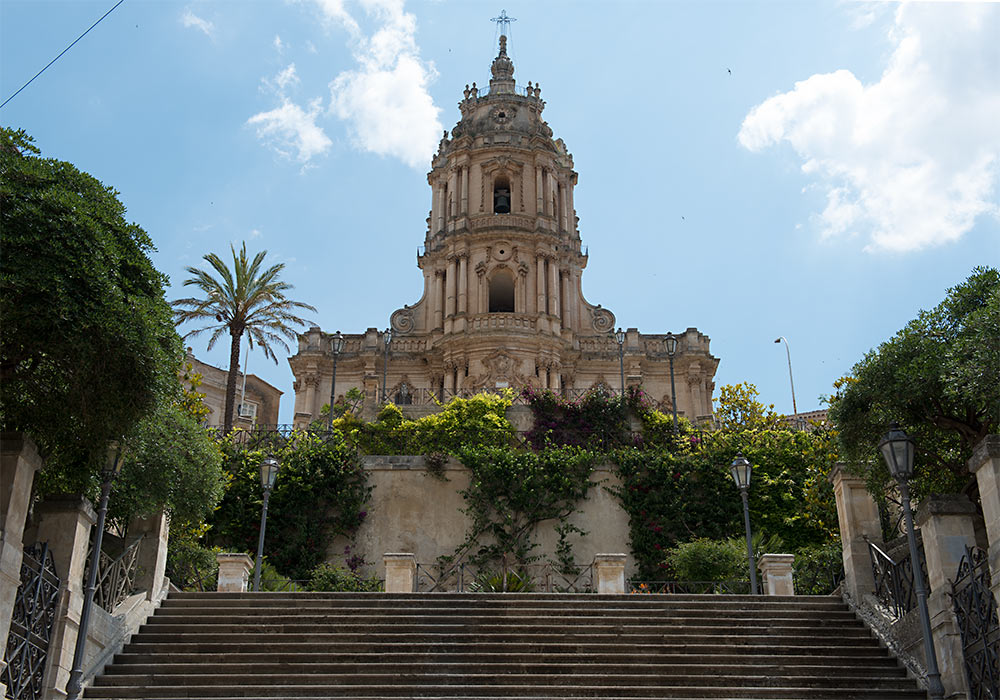
The cathedral in Modica.
The late baroque towns of the Val di Noto in South-Eastern Sicily that are inscribed on the UNESCO World Heritage List
The late baroque towns of the Val di Noto in South-Eastern Sicily that are inscribed on the UNESCO World Heritage List are Caltagirone, Militello Val di Catania, Catania, Modica, Noto, Palazzolo, Ragusa and Scicli. These towns were all rebuilt after the earthquake in 1693 on or beside towns. According to UNESCO, they represent a considerable collective undertaking, successfully carried out at a high level of architectural and artistic achievement. Keeping within the late Baroque style of the day, they also depict distinctive innovations in town planning and urban building.
The late baroque towns inscribed on the UNESCO World Heritage List represents the culmination and final flowering of Baroque art in Europe. The exceptional quality of the late Baroque art and architecture in the Val di Noto lies in its geographical and chronological homogeneity, as well as its quantity, the result of the 1693 earthquake in this region. The towns were all in existence in medieval times, characteristically around a castle and with monastic foundations.

